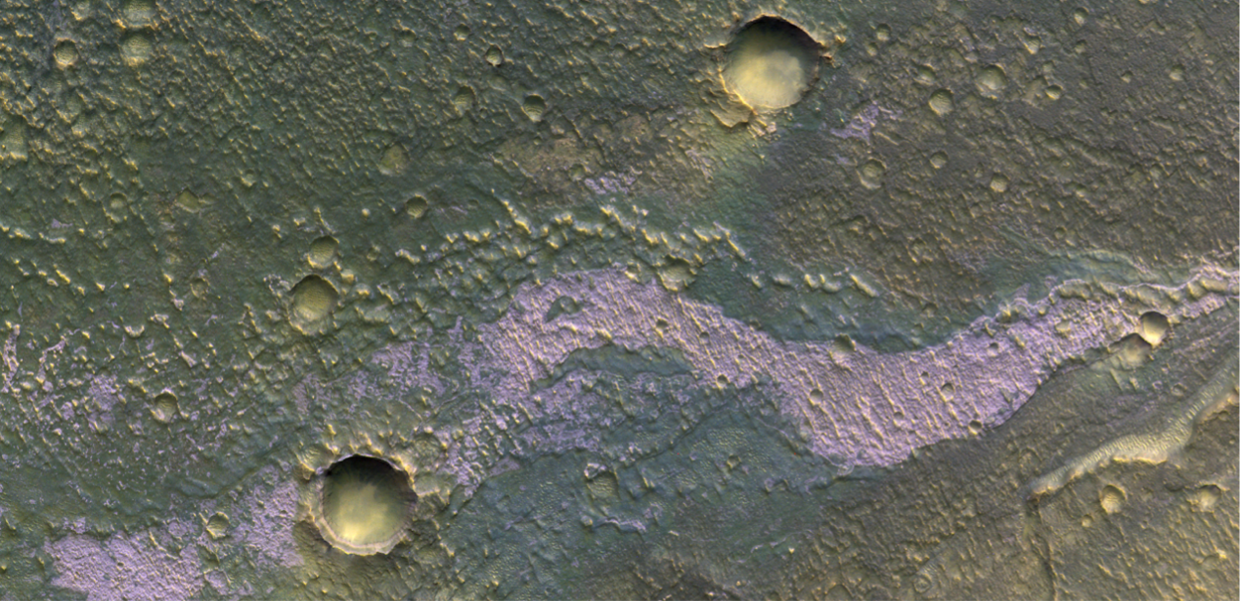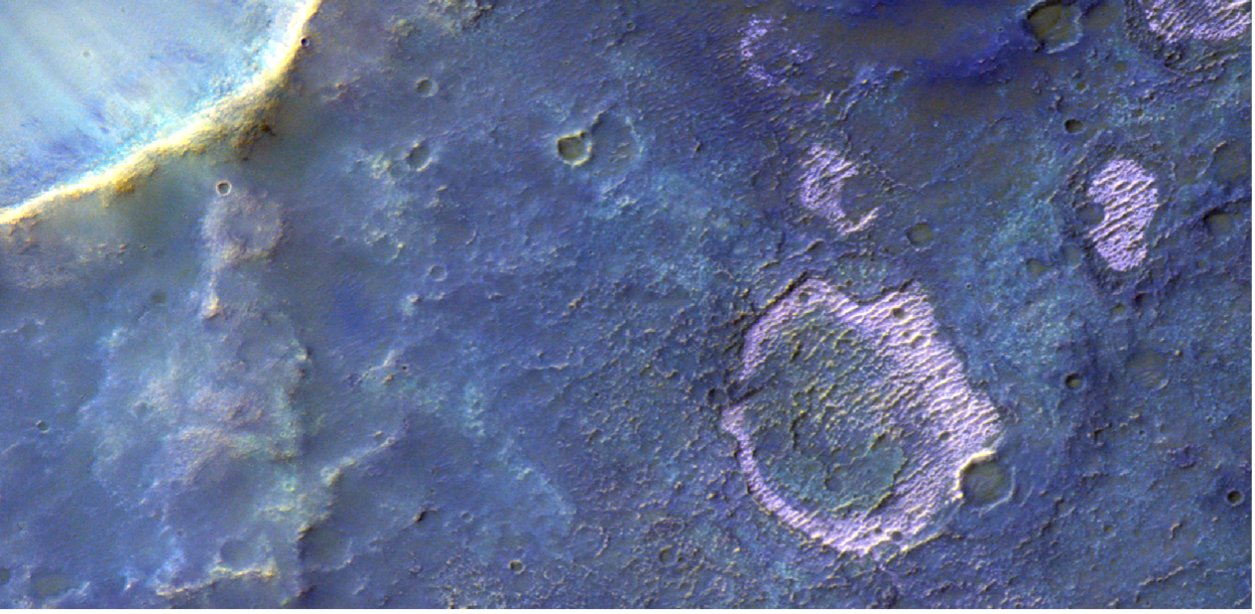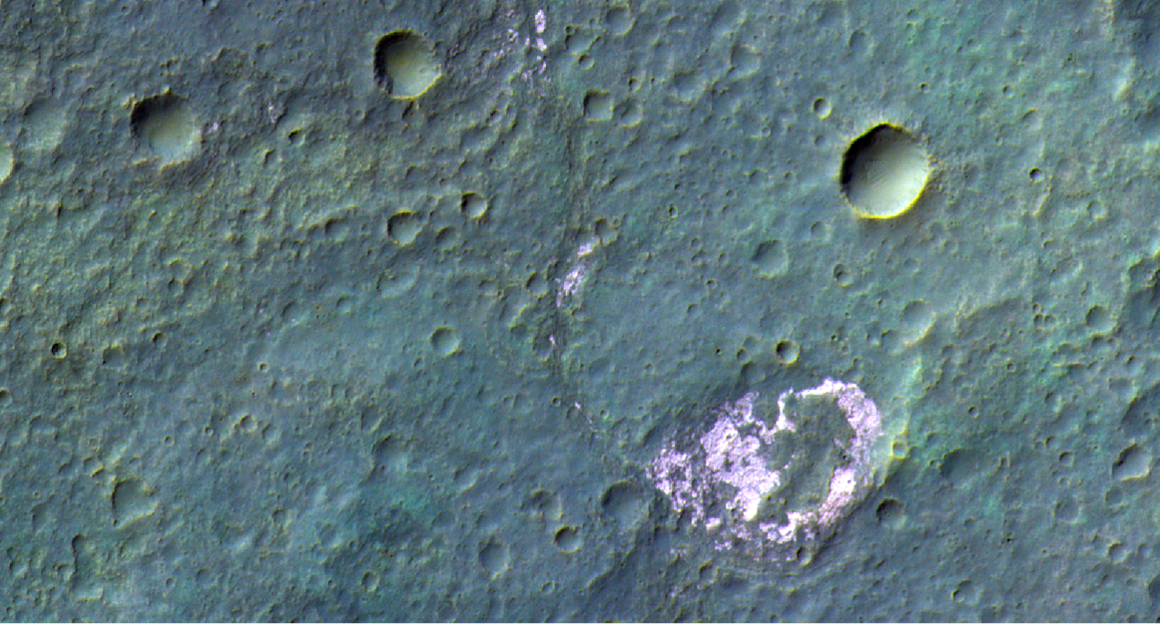As water disappeared over time, it left salt deposits behind. These salty fingerprints could be a beacon for habitable places on Mars.
Last week, a new paper published in Nature’s Scientific Data journal revealed never-seen-before data that helps us better understand the distribution of water in ancient Mars.
“In the distant past, water formed magnificent landforms such as riverbeds, channels, and deltas on the Red Planet,” explains Valentin Bickel, planetary scientist at the Center for Space and Habitability from the University of Bern, Switzerland.
A cold era began when Mars lost its magnetic field, couldn’t hold its own atmosphere, and water evaporated, froze, or was trapped within the surface.
Very salty waters could have become a haven for life. High concentrations of salt allow water to remain liquid at temperatures as low as –40 ºC.
“Salts are highly soluble in water. Chloride salt deposits are markers for early Mars’s aqueous past and could indicate the last time a region was covered by water,” says Valentin, author of a paper published by Nature Scientific Data that identifies nearly one thousand potential deposits with diameters ranging from 300 to 3000 metres.
“The new data has important implications for our understanding of the distribution of water on early Mars, as well as its past climate and habitability,” he adds.
The ExoMars Trace Gas Orbiter (TGO) detected these mineral fingerprints using its Colour and Stereo Surface Imaging System (CaSSIS). The sensitive camera revealed chloride salt deposits in the cratered region of Terra Sirenum.
“Most likely, those salt deposits formed from shallow ponds of water or brine that evaporated in the Sun. People use a similar method to produce salt for human consumption in saltwater pools on Earth,” says Valentin.

Mermaid on Mars. Traces of chloride salt deposits on Mars. Image MY36_021144_325_0. Credits: ESA/TGO/CaSSIS
A wave with purplish scales lured the attention of the TGO spacecraft as it flew over Terra Sirenum, Latin for Sea of the Sirens.
It is just an optical illusion – there are no mythological mermaids or seas on the martian world today. It is a colour-infrared composite image of a dried-up riverbed in the southern hemisphere of the Red Planet.
The chloride deposits and its direct relation to liquid water makes areas like Terra Sirenum good targets for future robotic missions searching for signs of life.
Chloride-bearing terrain does not stand out in regular black-and-white images but shows up a distinct pink to purple hue in colour-infrared images, making CaSSIS a unique tool to study the distribution of salts across Mars from orbit. In the absence of colour, chlorides are easily confused with other light-toned materials such as clays.
Sometimes, salt deposits on Mars seem to smile back at you 🙂
Paper in Nature Scientific Data: A Global Dataset of Potential Chloride Deposits on Mars as Identified by TGO CaSSIS.
You can find the images using the file name here.




Discussion: 2 comments
Just awesome thoughts. Indian mythology believe that Mars is son of earth, means created from earth once upon a time. Son give smiles to mother.
Thanks for the report.
These images and your scientific explanations, help me in the sense of benchmarking as a worsen scenario of droughts.
You diagnosed our grandpa Mars with useful Data.